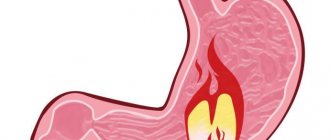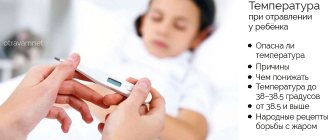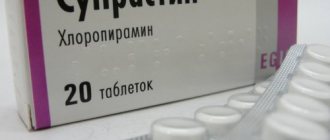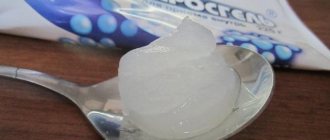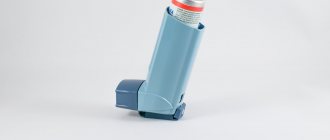Vitamin D is actually the first synthetic vitamin that a person begins to receive from birth, especially if it happened during the cold season, when walks in the sun are limited.
It is prescribed for the purpose of preventing a terrible disease - rickets, but sometimes it happens that irrational, excessive intake of calciferol leads to no less negative consequences for the body. What is vitamin D? In fact, this is not one substance, but several: all of them are biologically active and are formed under the influence of ultraviolet rays in the tissues of plants and animals, or come from the outside in synthetic form. Vitamin D includes ergocalciferol D2, cholecalciferol D3, as well as less common forms of calciferol - vitamins D4, D5 and D6.
The uniqueness of vitamin D lies in the fact that it is at the same time both a vitamin and a hormone responsible for calcium and phosphorus metabolism in the human body. Thanks to it, a special transport (binding) protein is produced, which ensures the absorption of substances such as calcium and phosphorus into the bloodstream from the intestines. That is why a lack of vitamin D provokes improper formation of the skeleton and problems in the functioning of the body as a whole, which does not receive microelements that are extremely important for life and development.
However, that’s not all, vitamin D brings us many more benefits:
- prevents and inhibits the growth of malignant tumor cells;
- synthesizes monocytes - special leukocytes that cleanse the blood of foreign cells;
- optimizes insulin levels (and therefore blood sugar),
- helps nerves and muscles interact.
Situations in which there is a lack of vitamin D in the body are associated with poor child care or difficult life circumstances: poor nutrition, insufficient exposure to walks and sun.
But an excess of this vitamin was first described in 1925, although the peak of recorded cases was noted only in the 60s of the last century, when they tried to treat rickets with “shock” doses. Artificial babies suffered especially, because they were not only prescribed an additional vitamin, but also the manufacturing companies began to enrich their formulas with calciferol (it should be noted that in those years there was a real boom in artificial feeding, so an overdose of vitamin D affected many).
General information about vitamin D3
Cholecalciferol (vitamin D3) is a biologically active substance. Without it, it is impossible for any of the human life systems to function properly. And its deficiency in young children causes growth retardation, curvature of bones and spine.
The vitamin is synthesized in human skin from cholesterol under the influence of ultraviolet (including solar) rays. In addition, it enters the body from the outside, with food.
Insufficient intake of vitamin D into the body of adults leads to memory impairment and decreased mental and physical performance. What functions does calciferol have:
- stimulates the production of immune cells;
- promotes optimal cell division and their proper formation, which is often used in the treatment of various skin diseases, for example, psoriasis;
- inhibits and sometimes completely stops the growth of malignant tumors by slowing down the division of mutated cells;
- optimizes the production of insulin by the pancreas, maintaining its level in the blood within normal limits;
- accelerates the transmission of nerve impulses to the central nervous system, strengthens the membranes of neurons.
But the main task of vitamin D3 is to ensure absorption (absorption) in the intestines of macro- and microelements, especially calcium, magnesium and phosphorus. It is these bioactive substances that are necessary for the timely renewal of the structures of the musculoskeletal system.
Natural sources of vitamin D3 are fatty fish, offal, chicken yolk, and seaweed. It is also found in natural butter, nuts and seeds, and vegetable oils.
Complications
The body is not always able to overcome the changes provoked by hypervitaminosis. With a significant overdose, the following complications appear:
- excessive accumulation of calcium in internal organs;
- joint pain that occurs without objective reasons;
- blockage of blood vessels, which leads to the development of atherosclerosis;
- constant decrease in bone density and deformation;
- increased volume of urine excreted;
- resorption of the connective membrane of the bone marrow;
- kyphosis, scoliosis, asthenia and other disorders of skeletal formation in children.
Bone fractures are increasing in both adults and children. An overdose also negatively affects vision. In particular, intracranial pressure increases and the iris becomes inflamed. Corneal opacity and cataracts are possible.
Area of application of the drug
An overdose of D3 is a dangerous condition, but not as critical as its deficiency. With an acute lack of cholecalciferol, rickets develops - a disease of a rapidly growing organism, characterized by impaired mineral metabolism and bone formation. Vitamin D3 is always prescribed by pediatricians for the prevention and treatment of this terrible pathology.
Indications for its use also include:
- insufficient intake of the vitamin from food or its poor absorption in the body;
- hypocalcemic tetany - decreased production of parathyroid hormone, leading to a sharp decrease in calcium in the blood plasma;
- disorders of bone tissue formation due to metabolic disorders;
- Osteomalacia is a systemic disease characterized by insufficient mineralization of bone tissue.
Vitamin D3 is almost always used in the complex treatment of osteoporosis , a disease that manifests itself as thinning of the bones. They become brittle, so they break even with minor impacts.
During menopause, due to decreased estrogen production, calcium absorption is disrupted. In addition to hormone replacement therapy, women are recommended to take vitamin D3 to prevent osteoporosis.
What are the symptoms of hypervitaminosis D and how to prevent it?
Vitamin D is an essential element of the digestive system.
Purpose – processing of calcium and phosphorus in the small intestine. D is the collective name for a group of elements, the most important being cholecalciferol, D3, and ergocalciferol, D2. Some researchers call them hormones for their participation in metabolism, hormone production, and regulation of division at the cellular level. But, like any substance taken in excess, it is harmful. An excess of vitamin D provokes disruption of the functioning of organs and systems. Hypervitaminosis of vitamin D is dangerous due to its consequences. An excess of calciferol leads to serious changes in organs:
- calcium deposition in the kidneys, resulting in the formation of stones;
- liver pathology – lack of bile secretion into the ducts;
- endocrine disorders;
- calcium deposition on the walls of blood vessels, the result is atherosclerosis;
- changes in skeletal density, pathological fractures;
- muscle and joint pain;
- osteochondrosis, postural disorders;
- opacities of the lens, cornea;
- osteoporosis;
- decreased urine density, polyuria.
High calciferol provokes a baby to lag in physical development from peers, delayed mental development, decreased memory and attention. Inflammatory diseases of the iris occur due to nutritional deficiency of the corneal vessels. There is a high risk of pathological changes in the spine leading to scoliotic deformities.
The main danger is the threat of spontaneous abortion. Failures of the excretory system lead to a high risk of eclampsia. Excess calciferol causes harm to the fetus - delayed formation of systems, pathological formation of bones, heart, excretory system.
Breastfeeding mothers have a high risk of emotional disturbances - depression, mood swings, exhaustion. Immunity is reduced and the risk of infectious diseases is increased. Excess calcium is deposited in the mammary glands, which causes mastitis, congestion, and loss of milk.
To prevent an overdose of dietary supplements with calciferol, you should take the drug exactly in the quantities prescribed by your doctor. When treating a small child, monitor the condition so as not to miss the appearance of threatening symptoms. Do not consume foods rich in calcium and calciferol at the same time as dietary supplements. Limit the influence of solar insolation during therapy.
source
A person becomes familiar with this vitamin immediately after birth: babies receive it to prevent rickets. This substance is vital at any age, so cases of overdose are not uncommon. However, hypervitaminosis D is a direct path to even greater problems. Balancing your vitamin levels is easy.
To ensure that the body does not suffer from vitamin abundance, you need to consider the following:
- Sources of the substance are sunlight, food, synthetic drugs.
- Vitamin preparations are taken only with a doctor's prescription. The doctor will take into account their compatibility with other medications prescribed to the person, his state of health, and other individual circumstances of the patient. Especially a small child. If there are no obvious signs of rickets, the doctor will not prescribe vitamin D.
- If you want to take the drug yourself, first be sure to look at the dosage of the capsule or tablet. Study the attached instructions for correct use.
- The substance is synthesized by sunlight, so long walks in the sun are undesirable. However, you shouldn’t neglect them either.
- Lack of calciferol is an “occupational illness” of people who constantly work night shifts, lead an active nocturnal lifestyle, or live in the Arctic Circle. They also lack sunlight.
- Unless absolutely necessary, vitamin D should not be taken in late spring and summer, when it is constantly warm and sunny outside.
You can support your body without synthetic drugs, using “natural” methods. That is, eat more fatty fish, seafood, caviar, seaweed, cheese, butter, egg yolks, oatmeal, and mushrooms. Or walk more on sunny days, leaving your skin as exposed to the sun as possible.
If an overdose is detected, measures must be taken immediately.
A slight excess is neutralized by ingesting a small amount of petroleum jelly. This will make it difficult to absorb the toxic substance.
Serious cases (for example, if a baby has eaten pills or emptied a bottle) require a set of standard actions for intoxication:
- stop taking the drug immediately;
- wash the stomach generously with water (at least one and a half liters) with potassium permanganate or slightly salted water to provoke vomiting;
- They give a saline laxative, and when the intestines have emptied, they add a sorbent (activated carbon or an analogue).
This allows you to quickly remove vitamin D from the body, reducing dangerous concentrations.
If poisoning is detected in a child under one year old, an elderly person or a pregnant woman, call an ambulance.
Emergency medical care is required for these categories of people if the following symptoms are present:
- diarrhea (especially with blood);
- severe vomiting;
- dehydration of the body;
- convulsions;
- drop in blood pressure;
- general weakness, fainting.
If a child has symptoms of vitamin D poisoning, the parents’ algorithm of action is to stop using the drug and urgently take him to the hospital.
If you seek help in a timely manner, the consequences of an overdose disappear without harm to health.
Read more: Immunity of a nursing mother, how to increase vitamins and remedies
The importance of vitamin D for human health is undeniable. A lack of it is harmful, but an overdose is simply dangerous. To prevent it from occurring, you need to use the drug carefully and always consult a doctor. Especially when it comes to small children, older people or pregnancy.
If pharmaceutical drugs are not available, a healthy diet and sunshine will help. However, they are also useful only in moderate doses.
source
An overdose of vitamin D can be avoided if, having identified the primary symptoms of the disease, you immediately limit the consumption of foods that contain this substance and refuse foods rich in calcium. At the same time, you should try to spend less time in the sun. In summer, it is recommended to wear light, well-covered clothing.
Drinking water is important. You should try to drink it as much as possible. The water should be simple, not containing any impurities. You need to drink at least 2 liters daily.
It is recommended to do this half an hour before meals, and then 1 hour after finishing the meal. You can drink every time, for example, 1-2 tbsp. To prevent an overdose of vitamin D, it is important to try not to exceed the daily requirement of this substance.
Doctors consider a dose of 700 IU per day safe for adults, but not for older people. The dosage increases slightly for those whose age exceeds 50 years. In this case, a dose of 900 IU per day is considered safe. It is 200 IU higher for pregnant women.
If your body receives too much vitamin D in a short time, you should do the following:
- Rinse the stomach. To do this, you can drink 1 liter of plain water and induce vomiting. You can dissolve a little potassium permanganate in water.
- Take a saline laxative – magnesium sulfate.
- Take adsorbent.
A specific antidote is not used. If intoxication occurs due to long-term use of vitamin D, the drug must be discontinued immediately. The hospital provides several treatment interventions that are aimed at reducing the negative effects of an overdose.
These events include:
- taking medications that increase diuresis;
- introduction of glucocorticosteroids, which normalize the processes occurring in cells;
- limiting the consumption of foods rich in vitamin D (this applies to some seafood, egg yolks, milk and beef liver);
- administration of sodium bicarbonate and glucose;
- taking pantothenic acid, as well as vitamins A, B and C, which help speed up the process of eliminating the consequences of an overdose;
- prohibition on prolonged exposure to sunlight.
An overdose of vitamin D, the symptoms of which were discovered and subsequently confirmed, requires immediate refusal to take preparations of this vitamin, as well as those multivitamin complexes that contain calcium.
| Purpose | Description |
| Injections | In case of intestinal toxicosis, the lack of water, protein and salts is compensated. Liquid is administered at the rate of 150 ml per 1 kg of body weight. Most of it is administered intravenously, and the rest is administered in small portions orally. At first, exclusively colloidal solutions are used, then they begin to alternate with crystalline ones. For neurotoxicosis, in addition to infusion therapy, dehydration therapy is carried out. Furosemide injections are prescribed at a rate of 0.5 mg per 1 kg of body weight per day |
| Cholestyramine | This drug binds vitamin D present in the body and prevents it from being absorbed into the blood. Cholestyramine should be taken twice a day at a rate of 500 mg per 1 kg of body weight. The average price of the drug Cholestyramine is 1800 rubles. One package contains 12 tablets, each weighing 4 g |
| Diuretics | Prescribed for severe vitamin D overdose |
| Insulin | Insulin is administered to enhance the production of thyrocalcitonin, which can have a hypocalcemic effect. This is done once a day, 2-4 units a quarter of an hour before meals. At the same time, a glucose solution is also injected into the veins |
| Steroid drugs | From this group of drugs, Prednisolone and Prednisone are used. Taking them helps reduce the negative effects of vitamin D on the body. In addition, these drugs accelerate the removal of calcium from the blood. Most often, adults are prescribed 20-30 mg per day. This dose is usually divided into 5 doses. The cost of the drug Prednisolone in Russian pharmacies varies from 15 to 120 rubles, a package of Prednisone can be bought for 250 rubles. |
| Tocopherol | This substance, which is vitamin E, has antioxidant properties and reduces the negative effects of vitamin D. You need to take tocopherol orally 1-2 times a day, 5-10 mg. Duration of therapy – 1.5 weeks |
| Vitamin A | It has a positive effect on bone mineralization and helps reduce calcium concentrations in the blood. It should be taken for 4 weeks |
| Vitamin C and B groups | Used to normalize metabolic processes |
Read more: Vitamin contained in tangerines
Traditional methods
Vitamin D3 dosage
Vitamin D3 poisoning occurs as a result of exceeding the dose recommended by the attending physician. He can draw up an individual treatment regimen, taking into account the severity of the disease, the patient’s age, and the presence of concomitant pathologies. In other cases, you should adhere to the dosage regimen given in the annotation.
An adult needs 800 IU of vitamin D3 per day. After 50 years, this value increases to 800-1000 IU. The same amount of cholecalciferol or even more (800-1200 IU) is needed for pregnant and breastfeeding women. For children, the daily value of vitamin D3 is calculated based on age:
- 0-1 month - 500 IU;
- 1-12 months - 1000 IU;
- 1-3 years - 1500 IU;
- 3-18 years old - 1000.
Single and daily doses are increased (up to 850 IU) if a person has an inflammatory or degenerative disease of the joints, for example, arthritis, arthrosis or osteochondrosis.
Normal dose for the body
Due to the peculiarities of the ways in which the vitamin enters the body, as well as the presence of other external factors (different levels of insolation for population groups living in certain territories, physiological characteristics of an individual organism, and so on), the exact recommended dosage of the substance is still the subject of scientific and medical discussion.
Domestic doctors consider the range of values from 100 to 500 IU of element D (in the total concentration of cholecalciferol and ergocalciferol) to be sufficient for the body for adults.
The highest therapeutic daily dose is a threshold of 3 thousand IU, and the direct toxic properties of the substance can appear with a single dose of 5 thousand IU.
Alternative researchers argue that acute symptoms of hypervitaminosis after an overdose of cholecalciferol and ergocalciferol can occur at dosages of over 1 million IU consumed per day.
Causes of vitamin D3 overdose
The cause of vitamin D3 poisoning in adults is often neglect of doctor's recommendations. In an effort to recover faster, they deliberately take more of the drug.
Hypervitaminosis also develops in the following cases:
- simultaneous use of medications intended to replenish calcium reserves in the body;
- elementary forgetfulness and repeated use of the drug;
- mental disorders, including Alzheimer's disease.
Vitamin D3 accumulates in adipose tissue in excess and in the presence of contraindications to its intake. These include renal failure, hypercalciuria, and kidney disease.
Consequences and prevention
What can happen after an overdose of vitamin D? Such intoxication can cause many complications.
Complications:
- Kidney failure
- The presence of infectious diseases,
- Toxic damage to the liver and heart muscle,
- Development of atherosclerosis,
- Deposition of calcium salts in the kidneys,
- Disruption of the normal functionality of the thyroid gland.
It is possible to avoid an overdose if you do not violate the rules for taking vitamin D. It is not recommended to take the medicine yourself, increase the dosage and the number of times you take it. Vitamin complexes must be stored in places inaccessible to children.
An overdose of vitamin D can cause many unpleasant moments to a person, especially when it develops in infants. If signs of poisoning appear, you must contact a medical facility.
Signs of intoxication
With a single dose of vitamin D3 in a high dose, intoxication develops rapidly. Pain in the epigastric region, heartburn, dizziness, weakness, and drowsiness occur. Fainting becomes a dangerous clinical manifestation of acute poisoning.
A slightly different picture arises with constant slight excess of doses over several weeks or months. Chronic overdose is manifested by the following symptoms:
- irritability;
- sleep disorders;
- joint pain;
- short-term convulsions, tremors, muscle twitching;
- losing weight;
- decreased appetite, nausea, vomiting, diarrhea or constipation;
- increased frequency of urination, swelling.
A fairly specific symptom of vitamin D3 overdose is decreased immunity . A person begins to suffer from viral and bacterial respiratory diseases more often.
Excruciating thirst often indicates acute intoxication. This is how the body signals the need to drink more fluid to remove vitamin D3 from the body.
Features of overdose
An acute overdose of cholecalciferol is indicated by the refusal of a small child to eat. He becomes lethargic, moody, cries often, and drinks a lot. Older children complain of abdominal pain, trembling of fingers, and visual disturbances. The severity of symptoms decreases only after eliminating excess vitamin D3. Since the symptoms are nonspecific, only a doctor can make a diagnosis.
First aid for vitamin D3 overdose
If a child overdoses on vitamin D3, you should call an ambulance. This is also necessary in case of severe poisoning of an adult. You can help the victim in the following ways:
- rinse the stomach with warm water until the liquid leaves without any vomit;
- give any fast-acting laxative, for example, magnesium sulfate, as well as enterosorbent - Polyphepan, activated carbon, Enterosgel;
- drink hot, sweet tea.
The arriving doctor decides what to do next. He examines an adult or child and, if necessary, hospitalizes him.
Restoration of the body
In acute and severe forms of intoxication resulting from an overdose of vitamin D, basic measures are taken to treat the victim in a hospital and intensive care unit.
Possible actions to restore the body include:
- Formed diuresis;
- Oxygen therapy if necessary;
- Parenteral administration of saline and glucose;
- Use of sodium bicarbonate to reduce acidosis;
- The use of antibiotics and glucocorticosteroids - the former help cope with secondary bacterial infections that form against the background of decreased immunity, while the latter normalize intracellular processes and reduce inflammation;
- Treatment of complications . Depending on the identified negative consequences that arise as complications of overdose, glycosides, metabolites, nitrofurans, neuroprotectors, adrenergic blockers, nalidixic acid derivatives and other drugs can be used;
- Additional actions. Usually this is a diet, the appointment of vitamins A, B, C and E, and physical therapy.
Treatment
Immediate first aid to the victim will help reduce the intensity of symptoms. But excess vitamin D3 will be removed from the body only after treatment for a child or adult. Another 1-2 times gastric lavage will be required, gentle diuretics are prescribed.
In case of acute intoxication, solutions of glucose, sodium chloride, and Ringer's are administered parenterally. To relieve symptoms, the use of cardiac glycosides, adrenergic blockers, and metabolites is practiced.
